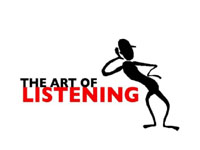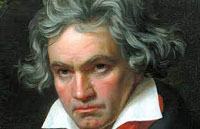Psychology
The art of listening
In a world of sophisticated gadgetry, the art of listening suffers a great casualty. Listening is a faculty bestowed by Nature and it is a technique that gets perfected in the matrix of interpersonal relationships. Yet, in a world satiated with hedonistic pleasure and the workaholism of corporate culture, who does justice to the art of listening? It would be tragic to squander away a great gift of nature that holds unfulfilled potentialities. Even the great wisdom came down to the listening Self which were articulated by prophets like Moses and expressed as mantras by the great Upaniṣadic seers.
The kindergarten teacher does not listen to her students. The court refuses to hear the full story during a trial. The politician in power does not listen and a coterie of such politicians can very well refuse to listen to the vox populi. And since friendship as a phenomenon seems to be disappearing from a world of corporate culture, there is no one to spare the time to listen to a friend’s woes. Carl Rogers, who developed Person-Centred Therapy, refined the concept of empathy to indicate the listener’s effort to hear the other person deeply, accurately and non-judgmentally. Rogers emphasised that empathy was itself a healing agent because it gives a sense of belonging to a client with great fear or low self-esteem. And he revealed that he discovered while working with the mentally ill that the continued experience of not being really heard can make some individuals psychotic. And people who are socially deprived, living in dungeons, are hardly ever heard for messages from the dungeons are so faint (1)!
Listening does not take place in an inert and autistic-like template of the human body but is a vibrant and conscious phenomenon that is supported by the Self of the body which in turn must be a projection of the Being. Levin builds up the thesis that this Being must be an open-ended incommensurable matrix of sonorous energies (2). Levin talks about that matrix in a psychological sense but hits the periphery of a vast spiritual realisation which regards that cosmic matrix of sonorous energies as not a stand-alone phenomenon but a projection of the Śabda Brahman which is the transcendental sound vibration. Indeed. Indian ṛsis named objects by using sounds that tuned in to the vibrations of the objects and this intuitive endeavour led to the correct naming of myriad objects in nature — flowers, plants, rivers, mountains, birds and animals. The fundamental perspective of Indian classical music, art and poetry are grounded in the paradigm of the cosmic matrix of Śabda Brahman.
The trajectory of the listening Self
Levin himself has mapped unique stages of Self-development where the art of listening can be progressively perfected and viewed in a vast spiritual gestalt.
The first stage
Levin explains that the first stage of developing the listening Self involves a free and fluid connection of the baby with the sonorous matrix in the cosmos. It seems that the infant hears with the whole body. This is a striking intuitive realisation that corroborates with the mystical experience, where the foetus in the womb exposed to classical music during their mothers’ pregnancy later seem to develop affinity to the music played. In exceptional cases, they could also respond to sounds of languages played during that period which were alien to their mother-tongue. And infants who have been exposed to classical music after birth, even while they merrily slept, develop musical sense in a striking way when they grow up!
Lewis laments: “In the process of socialization, we inevitably lose touch with this pre-ontological relationship….. and as we mature, the utterly open dimensionality of our hearing is increasingly repressed — sometimes getting psychotically split off (3).”
While this repression is temporarily useful in the development of our unique auditory capacity, our unwillingness to relive the primal experience can be problematic in adult life.
The second stage
In the second stage of development, that spans from later infancy to adolescence or adulthood, hearing becomes personal and skilled, buoyed by biological and social conditioning so as to meet the challenges of interpersonal living, while the emergent ego structures the milieu in terms of subject and object. Though now cut off from the sonorous matrix, echoes of the primeval stage can persist and resonate. This is how even in adult life, one can return to live that primordial ecstasy so that it can be integrated in life.
It seems that in some children, there can be a regression back to the primordial state so that listening per se does not get organised around the emergent ego. One can speculate that such a regression can lead to the appearance of communication disorders with autistic features (4).
The third stage
There is a third stage of development of the listening Self where the individual can pursue a self-discipline that leads one to a creative space beyond the ambit of the ego. Ordinarily the ego bounds one defensively to a socially adaptable zone but a creative individuation can surpass it so that the listening Self grows richer in its repertoire (5). Thus the musician can increase the listening skill by cultivating the ear for pitch and timber, tonal register, harmonies and discords. The musician hears sounds like choirs of sound which the untrained ear can never hear. Yet such a skill requires to be developed in a spirit of inner discipline where one imbibes the silence of the spheres to tune in to the music of the spheres (6).
This is how we can understand that the aborigine without the sophistication of the musician can still ‘hear’ the cyclone before our meteorological radar detects it! The primitive human was one with the universal consciousness and could decipher messages from nature for he or she could listen not only with one’s ears but with the whole body, albeit with the whole physical consciousness that even extends to the immediate physical milieu that holds the body.
This is also a stage that the counsellor must consciously develop so as to improve his or her listening skills in such a way that the very act of listening facilitates the phenomenon of empathy. Counselling becomes enriched with skilful listening and gives the client the much-needed sense of security and support.
The fourth stage
There is a fourth stage of development of the listening Self where one rarely ventures unless one is deeply motivated to traverse the hierarchies of consciousness. For it requires one to come into experiential contact with the higher echelons of consciousness. Levin believes there is a restructuring of the figure ground difference where the ontological difference between beings and the Being can manifest within the Gestalt of an auditory situation (7).
From the Aurobindonian perspective, this stage actually represents an experiential contact with supra-cognitive planes of consciousness which requires perception by supra-rational faculties. When Beethoven stated before his death that “I shall hear in Heaven (8),” the deaf seer was actually indicating that he was in experiential contact with the soundless music of the spheres where there was no surface that could be struck to produce a sound. In the great spiritual tradition of India, this soundless music is called the anahata dhvani from where great classical musicians receive their creative inspiration for the rāgas that can evoke different feelings in different milieus.
Does the fourth stage indicate a reverting back to the primordial sonorous matrix of infancy? Yes and No. Yes, because one is again in contact with that primordial state with one’s whole consciousness. No, because the contact now would be in a different denouement through a growth in consciousness. The infant is in undifferentiated contact with the primordial base. The aspirant who has embarked on a scheme of personal growth has progressed through differentiation to first identify with the cosmic consciousness and then to experience the transcendental consciousness.
Of course, during that ascent, the aspirant could get stalled or fall back to the primordial stage of infancy. That would be a good example of spiritual emergency where the one who has fallen could exhibit regressive or psychotic-like symptoms with an undecipherable language — a surrealistic neologism that would puzzle everyone!
But the one who has succeeded to reach the higher echelons of consciousness could hear the sound at its origin, the mantra that revivifies and beyond it the AUM, the primal sound of creation that symbolises the final transfiguration:
“This word was seed of all the things to be…
As when the mantra sinks in Yoga’s ear,
Its message enters stirring the blind brain
And keeps in the dim ignorant cells its sound;
The hearer understands a form of words
And, musing on the index thought it holds,
He strives to read it with the labouring mind,
But finds bright hints, not the embodied truth:
Then, falling silent in himself to know
He meets the deeper listening of his soul:
The Word repeats itself in rhythmic strains:
Thought, vision, feeling, sense, the body’s self
Are seized unutterably and he endures
An ecstasy and an immortal change;
He feels a Wideness and becomes a Power,
All knowledge rushes on him like a sea:
Transmuted by the white spiritual ray
He walks in naked heavens of joy and calm,
Sees the God-face and hears transcendent speech… (9)”
References
1. Rogers C. Freedom to Learn. Columbus, OH: Charles E. Merrill; 1969.
2. Levin DM. The Listening Self. Personal Growth, Social Change and the Closure of Metaphysics. Abingdon UK: Routledge; 1989, p. 45.3. Ibid., p. 46.
4. Ibid., p. 47.
5. Ibid.
6. Ibid., p. 84.
7. Ibid., p. 48.
8. Enright, DJ. The Oxford Book of Death. Oxford: Oxford University Press; 1987, p. 331.
9. Sri Aurobindo. The Complete Works of Sri Aurobindo, Volume 33. Pondicherry: Sri Aurobindo Ashram Trust; 1997, p. 375.
Share with us (Comments, contributions, opinions)
When reproducing this feature, please credit NAMAH, and give the byline. Please send us cuttings.





